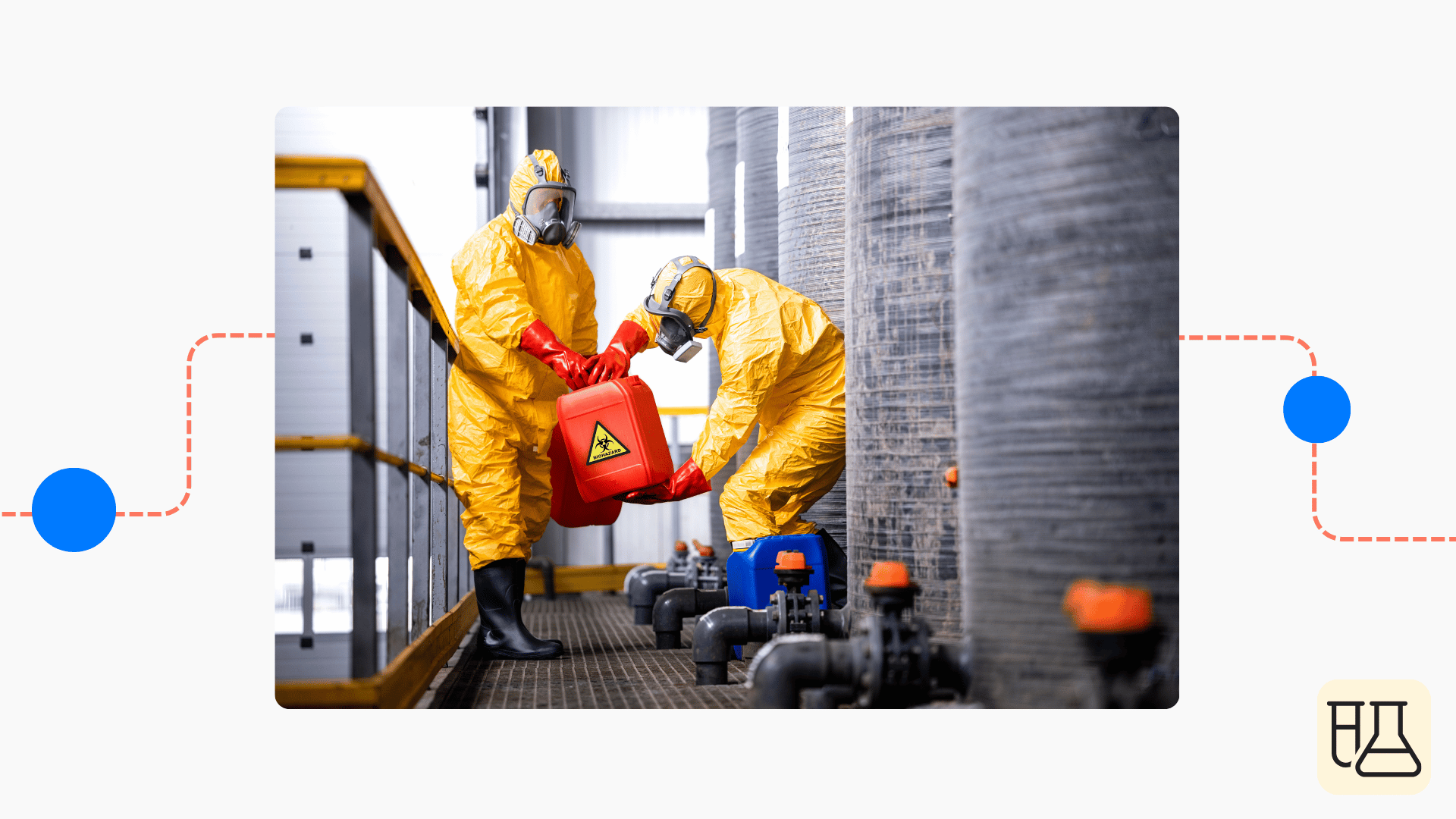OSHA’s hazard communication (a.k.a. “HazCom”) standard protects workers from the dangers of chemicals in the workplace. With strict labeling and documentation requirements in place, OSHA helps reduce the likelihood of chemical safety incidents and environmental disasters. Doing this hazard communication toolbox talk is a perfect way to keep your team updated on the site’s chemical safety protocols.
Hazard communication toolbox talk overview
In this toolbox talk, we’ll go over:
- The purpose of the hazard communication standard
- Handling best practices
- Emergency response basics
Understanding hazard communication signage and following best practices is critical to protect yourself from injury.
Purpose of HazCom
Skin rashes, burns, and respiratory illnesses are the most common types of injuries that chemicals cause. The point of hazard communication is to protect workers from these injuries by clearly labeling hazardous chemicals
Having details about chemicals up front leads to better, safer decision-making. And in emergencies, this quick access to critical information can help reduce the likelihood or severity of a health and safety issue.
HazCom labeling requirements
The HazCom standard has several requirements for labeling hazardous chemicals. This includes using signal words like “danger” or “warning,” precautionary statements, and pictograms to notify people of chemical hazards.
There’s also the requirement for safety data sheets, which list important details like the hazards and properties of chemical substances and provide recommendations for handling and storing them. You can look at the SDS to verify what type of PPE you need to wear, what to do for first aid, and how to respond in an emergency.
Chemical handling best practices
When you’re handling hazardous chemicals, you need to make sure you’ve got the right PPE on. Check the SDS and chemical label to confirm whether you’ll need gloves, goggles, a respirator, or any other protective equipment. Also, don’t forget to inspect your PPE before each use so nothing gets through the barrier.
The other side of safe chemical use is proper handling. Here are some tips to follow when handling chemicals:
- Never mix substances unless you’re sure it’s safe and it’s a part of your process.
- Put the lid back on chemical containers between each use.
- Let others in the work area know about any hazardous substances you’re using.
- Keep a safe breathing distance from chemicals to avoid inhalation hazards.
- Always ensure proper ventilation in your workspace before using chemicals.
The last thing you want to happen is an accidental chemical spill or leak because you left chemicals out where they shouldn’t be. When you’re finished using hazardous chemicals, put them back away in their dedicated storage spot.
Emergency response procedures
If you happen to spill a hazardous substance, try not to panic. Depending on the chemical, you may need to evacuate the area. That’s why you should let your manager know right away when there’s a spill. If there’s no manager around, the SDS will tell you what to do.
You also want to be aware of the closest cleanup kit and emergency wash stations. If you or someone else gets burned or otherwise injured, the two main things to do are treat the immediate injury and secure the scene.
While the hazard communication standard does prevent these types of incidents, they’re still possible. However, if you’re wearing the right PPE, storing chemicals properly, and practicing safe handling techniques, your risk of injury goes down significantly.
Other posts you might like…
No posts
